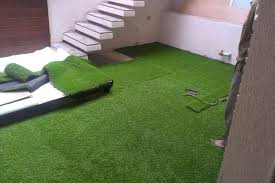Aside from residential and commercial uses, artificial turf can be used for playgrounds and sports fields. Unlike natural grass, however, artificial turf can get very hot. This is because the base is filled with granulated rubber, which absorbs more heat from the sun. However, there are several ways to minimize the risk of excessive heat, including regular raking and soaking with water. Here are some examples of common problems with artificial turf.
The study looked at three types of exposure: dermal exposure, ingestion, and dermal absorption. In one study, researchers found high concentrations of lead. As these materials weather, they release lead into the environment, potentially exposing young children to the hazardous substance.

A field made of artificial turf has three layers: the padding and backing material, the infill material, and the grass blades themselves. The padding and backing material make up the bottom layer, while the infill material is made of recycled tires. These materials stabilize the artificial turf field and keep the grass blades upright. The rubber crumbs can get into players’ uniforms, hair, and cleats. Aside from these concerns, there are several advantages of artificial turf.
After cutting artificial grass to fit the surface, it should be installed. The artificial grass is available in rolls. The roll should be oriented the same way for each roll. Once installed, leave the grass to rest for twenty-four to forty-eight hours to ensure proper installation. Afterwards, cut each roll using a sharp knife. When cutting rolls, the length of each roll must be measured. Cut the roll according to the area it covers and then place it one after another.
The Synthetic Turf Council says research has found no evidence of adverse effects, including a reduction in allergic reactions. But the Synthetic Turf Council says there are many factors to consider when installing an artificial turf athletic field. Premier Grass’s investigation of the industry’s safety is not conclusive. The Synthetic Turf Council points to a number of studies which show that artificial grass is safe for humans. Its website offers a document containing details about the health risks associated with artificial turf and provides recommendations for safety.
